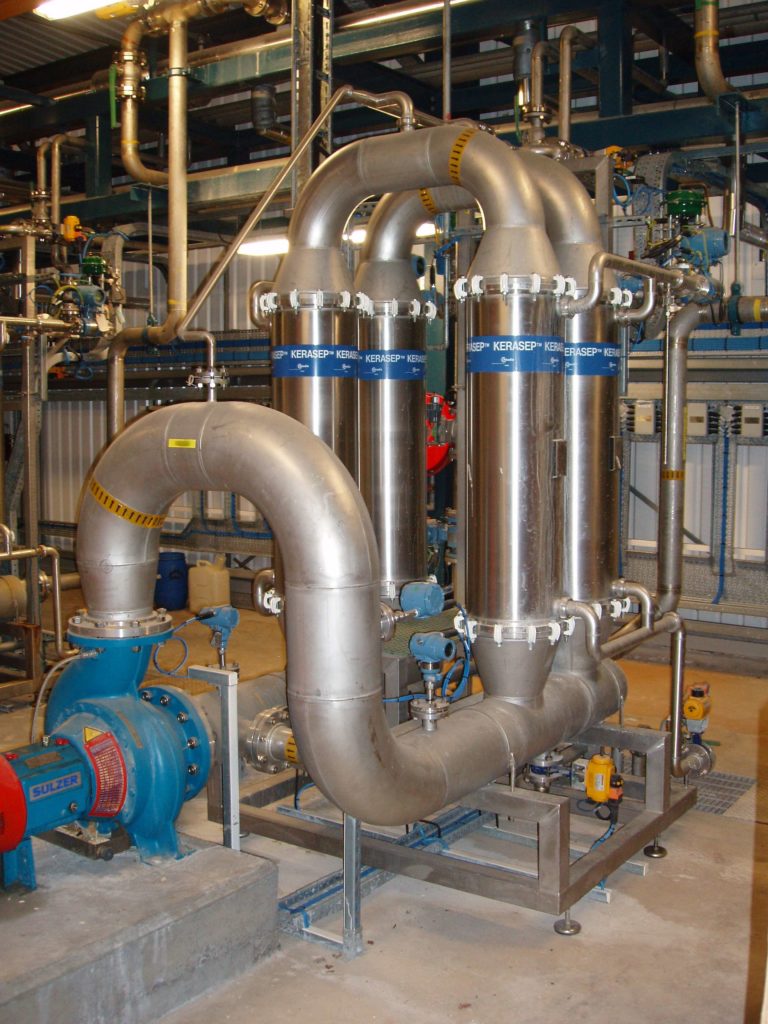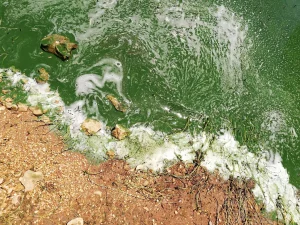Southeast Asia is a region facing a number of challenges in terms of water resources. These challenges include water scarcity, pollution, and climate change. In order to meet the growing demand for water and to protect water quality, Southeast Asian countries are investing in new technologies and methods for water treatment and management.
Some of the latest innovations in water treatment and management in Southeast Asia include:
- Desalination technology: This technology removes salt from seawater to produce drinking water. Desalination plants are becoming increasingly common in Southeast Asia, as they can provide a reliable source of water in areas where freshwater is scarce.
- Nanotechnology: This technology uses nanoparticles to remove contaminants from water. Nanoparticles can be used to filter out pollutants, such as bacteria and viruses, from water.
- Solar water purification: This technology uses solar energy to purify water. Solar water purifiers are a sustainable and affordable way to produce clean water in remote areas.
- Membrane filtration: This technology uses membranes to filter out contaminants from water. Membrane filters are very effective at removing small particles and microorganisms from water.
- Wetland treatment systems: These systems use natural processes to remove contaminants from water. Wetland treatment systems are a cost-effective way to treat wastewater and to improve water quality.
These are just a few of the latest innovations in water treatment and management in Southeast Asia. These innovations have the potential to improve water quality and security in the region, and they are helping to address the challenges posed by water scarcity, pollution, and climate change.
Desalination technology

Desalination, the pivotal process of extracting salt from seawater to yield freshwater, stands as an increasingly vital solution in Southeast Asia. The region’s struggle with water scarcity accentuates the significance of this technology.
Two principal desalination methods exist: thermal desalination and membrane desalination. Thermal desalination leverages heat to vaporize seawater, subsequently condensing the vapor to produce freshwater. In contrast, membrane desalination employs specialized membranes to selectively eliminate salt ions from seawater.
Delving into the advantages of desalination technology:
- Reliable Resource: In locales grappling with freshwater scarcity, desalination serves as a dependable water source, addressing critical supply gaps.
- Renewable Drinking Water: The conversion of seawater into potable water establishes a renewable drinking water source.
- Strategic Location: Placing desalination plants near the coastline aids in curbing water transportation expenses.
However, challenges interlace with these benefits:
- Energy Demand: The energy-intensive nature of desalination can amplify operational costs, posing financial considerations.
- Brine Impact: The concentrated salt and mineral solution – brine – generated during desalination can adversely affect marine ecosystems if released into the ocean.
- Environmental Footprint: The comprehensive ecological ramifications of desalination plants remain a subject of ongoing examination.
Financial dynamics differ based on technology type and plant location, with the anticipated operational lifespan spanning 20 to 30 years.
Delving into the environmental intricacies:
Brine Challenge: Desalination plants produce brine, a concentrated salt and mineral solution, which can potentially harm marine life if not responsibly disposed of.
Energy Thirst: Energy-intensive desalination processes contribute to greenhouse gas emissions, influencing the environmental balance.
Water Quality Considerations: While desalination excels in purification, it can strip water of beneficial minerals, altering taste and potentially impacting human health.
Balancing these complexities, desalination remains an essential asset for bolstering water security in regions grappling with water scarcity. As technological advancements unfold, it’s expected that the environmental footprint of desalination plants will diminish, aligning with sustainable goals.
Nanotechnologies
Nanotechnology, a field dedicated to manipulating matter at the nanoscale – an astonishing billionth of a meter – has emerged as a pivotal scientific endeavor. Notably, nanoparticles, tiny particles ranging from 1 to 100 nanometers, serve as its cornerstone.
Nanotechnology has seamlessly integrated into various water treatment domains:
- Purification Mastery: Employing nanoparticles facilitates the removal of diverse pollutants, spanning bacteria, viruses, and heavy metals, from water sources.
- Desalination Enhancement: Nanoparticles elevate desalination plant efficiency, a crucial stride toward addressing water scarcity.
- Disinfection Breakthrough: Nanoparticles pave the way for water disinfection, endowing us with potable water resources.
- Filtration Excellence: Leveraging nanoparticles empowers comprehensive water filtration, banishing contaminants from water supplies.
Intriguingly, nanotechnology boasts several merits for water treatment:
- Pollutant Spectrum: Its versatility encompasses the removal of an expansive array of pollutants, ensuring enhanced water quality.
- Process Efficiency: Water treatment processes, including desalination and filtration, experience heightened efficiency with nanotechnology’s integration.
- Safe Water Assurance: Nanotechnology plays a pivotal role in delivering safe drinking and utility water, even in regions grappling with compromised water quality.
However, a spectrum of considerations emerges:
- Novelty and Uncertainties: As a relatively nascent technology, the long-term implications of nanoparticles in water treatment remain a subject of exploration.
- Health and Environmental Balance: Mishandling nanoparticles could pose health risks and ecological consequences, underscoring the need for responsible application.
- Economic Realities: Nanotechnology for water treatment carries significant costs that might be a barrier to widespread adoption.
The financial outlay varies based on application type and project scope, while the anticipated lifespan of nanotechnology-infused water treatment systems generally spans 10 to 20 years.
Further elaborating on these dynamics: Pros:
- Pollutant Eradication: Nanoparticles act as a potent tool against an extensive pollutant spectrum, encompassing bacteria, viruses, heavy metals, and organic contaminants.
- Process Optimization: Nanotechnology catalyzes the efficiency of water treatment processes, enhancing the yield of desalination and filtration.
- Resilient Water Production: Even in locales plagued by subpar water quality, nanoparticles drive the production of safe, usable water.
Cons:
- Uncharted Territories: As a nascent endeavor, the long-term implications of nanoparticle integration in water treatment warrant thorough investigation.
- Health and Ecological Considerations: Careful management is essential, as inadequate handling of nanoparticles could precipitate health risks and environmental perturbations.
- Economic Hurdles: The current cost landscape of nanotechnology-based water treatment might impede its widespread adoption.
Gazing into the future: Though challenges persist, the potential of nanotechnology to revolutionize water treatment is undeniable. As this field matures, costs are predicted to wane, offering broader accessibility, while the complexities surrounding health and environmental impacts are poised to receive heightened clarity.
Solar Water Purification
Cultivating Water Purity through Solar Innovation
Solar water purification stands as a groundbreaking methodology, harnessing solar energy’s potential to achieve water purification. This pragmatic technology is gaining prevalence in Southeast Asia due to its sustainable and cost-effective approach to water treatment.
Two primary methodologies define solar water purification: solar distillation and solar photocatalysis. Solar distillation capitalizes on solar heat to vaporize water, subsequently condensing it into freshwater. Conversely, solar photocatalysis employs solar light to activate catalysts that dismantle pollutants in water.
The method offers several merits:
- Sustainability Embodied: Solar water purification aligns with renewable energy, reducing carbon footprint and addressing environmental concerns.
- Economic Viability and Simplicity: It presents an affordable solution, particularly in areas with limited access to conventional power sources.
- Remote Accessibility: It extends its benefits to remote regions with scant access to clean water, potentially enhancing public health.
Yet, challenges persist:
- Efficiency Dynamics: In comparison to alternatives such as reverse osmosis, solar purification might exhibit slower water production rates.
- Sunlight Dependency: Regions with inadequate sunlight might experience intermittent water output, necessitating supplementary measures.
- Initial Capital: The installation costs of solar water purification systems can be relatively higher.
Exploring the pros and cons in detail: Pros:
- Sustainability Focal Point: Solar water purification’s alignment with renewable energy contributes to sustainability efforts and climate change mitigation.
- Operational Ease: Especially beneficial in off-grid areas, it provides a straightforward and economically viable water treatment method.
- Health Implications: Its use in water-scarce regions could potentially lead to improved public health outcomes.
Cons:
- Measured Output: The technology’s water production rate, especially in low sunlight areas, might be comparatively slower than some alternatives.
- Sunlight Variability: Inconsistent sunlight patterns could challenge consistent water production, warranting supplementary approaches.
- Financial Considerations: Implementing solar purification systems requires initial capital investment, which needs to be weighed against long-term advantages.
Looking ahead: Despite these considerations, solar water purification holds promise for Southeast Asia’s quest for clean water. As technology progresses, it’s anticipated that costs will decrease and efficiency will improve.
Membrane filtration

Introducing membrane filtration, a cutting-edge water treatment technique harnessing specialized membranes to eradicate contaminants from water sources. Membranes, delicately thin sheets endowed with specific-sized pores, allow the passage of water molecules while effectively barring larger impurities.
An array of membrane filtration methodologies exists, each with its distinct merits and drawbacks. Among the notable processes are:
- Microfiltration: Employing membranes with roughly 0.1-micron pores, microfiltration adeptly eliminates bacteria, viruses, and diminutive particles from water.
- Ultrafiltration: Operating with membranes featuring approximately 0.001-micron pores, ultrafiltration excels in extracting dissolved organic matter and other minute molecules.
- Reverse Osmosis: Employing membranes with pores around 0.0001 microns in size, reverse osmosis emerges as the pinnacle of membrane filtration, effectively purging even the most infinitesimal contaminants from water.
Membrane filtration’s versatility extends to its capacity to eliminate a diverse array of contaminants from water. This sustainable and efficacious technique is gaining momentum across Southeast Asia.
Advantages inherent in membrane filtration encompass:
- Comprehensive Contaminant Removal: It efficiently eliminates a broad spectrum of impurities from water, spanning bacteria, viruses, heavy metals, and organic pollutants.
- Sustainability Champion: Doubling as an environmentally responsible approach, it eschews greenhouse gas emissions and finds utility in treating wastewater.
- Economical Edge: While the initial investment might be substantial, the operational costs of membrane filtration systems remain comparatively modest.
However, challenges persist:
- Energy Consumption: The operation of membrane filtration systems can be energy-intensive, necessitating significant power to operate the required equipment.
- Scale-Up Complexities: Accommodating large populations through scaled-up membrane filtration systems poses spatial and financial constraints.
- Membrane Costs: Regular replacement of membranes incurs notable expenses, adding to the financial considerations.
Exploring deeper nuances: Pros:
- Versatile Contaminant Removal: Membrane filtration excels in ridding water of an extensive range of pollutants, including bacteria, viruses, heavy metals, and organic impurities.
- Holistic Sustainability: Beyond purifying water, it contributes to sustainability by minimizing greenhouse gas emissions and repurposing wastewater.
- Economic Efficiency: While installation costs can be substantial, the ongoing operational expenses of membrane filtration systems remain relatively budget-friendly.
Cons:
- Energy Intensiveness: Operating membrane filtration systems entails substantial energy consumption, driven by the pumps and equipment employed.
- Scale-Up Challenges: Adapting these systems to serve large populations presents logistical and financial complexities due to space and cost constraints.
- Membrane Expense: Regular replacement of membranes incurs recurring costs that warrant consideration.
In summation, membrane filtration embodies a promising avenue for providing clean water across Southeast Asia. As the technology matures, anticipated reductions in costs and augmented efficiency are poised to make it more efficient.
To go further:
- The United Nations World Water Assessment Programme (WWAP) https://www.unesco.org/en/wwap
- The Asian Development Bank (ADB)
https://www.adb.org/what-we-do/topics/water/overview - The World Health Organization (WHO)
https://www.who.int/news-room/fact-sheets/detail/drinking-water







